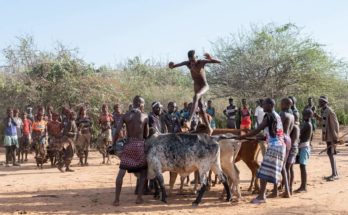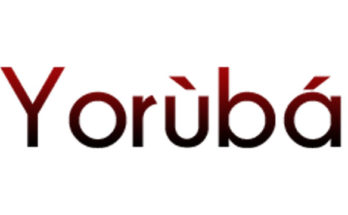Over the years, there have been an inter diffusion of culture between continents, states and nations. The advancement in technology which has successfully knitted the world into a close bubble, has ensured massive exposure and in-depth critique of almost everything from religion to governmental policies as well as the cultures practiced in various cities. As Africans in general and Nigerians in particulars, there seem to be a massive eroding of cultures which used to be a thing of Joy when practiced. Many now see a lot of these cultures as archaic, brutal and cannot be associated with.
One of the cultures gradually fading out in Nigeria is scarification which is popularly known as tribal marks. The practice of having tribal marks being abhorred or frown at by most parents. Today, people body shame any one seen to have tribal marks and this has led to many desperately looking for ways to cover the marks up. A lot of females with tribal marks now use heavy makeup in bid to hide it from public scrutiny. Those with the resources undergo, sometimes life threatening, plastic surgeries in a bid to permanently erase these marks from their faces. One then wonder the motive behind these tribal marks.
Tribal marks to many, especially those born in the 21st century, are scary, mysterious and laughable inscriptions drawn on a person’s face either by cutting or inking the face. Many people fail to appreciate the beauty, purpose and indicators of these marks hence labelling it vulgar descriptions. These marks were drawn for different purposes by the various multidimensional ethnic groups in Nigeria.
The Ichi which is drawn mostly by the Igbos was a facial incision carried out on their men which symbolizes that the wearer had successfully passed through initiation into the highly revered noble society known as Nze na Ozo. The Nri style worn in the Awka- Nri areas and the Agbaja style worn in the Awgwu and Nkanu areas are the two main Ichi styles. These styles were drawn differently with the Nri style carved line running from the centre of the forehead down to the chin with a second line drawn across the face, from the right cheek to the left. This pattern was being done to portray the rays of the sun. The Nris’ scarification was a way of honouring the sun which they worshipped. The Agbaja style, on the hand, circle and semi-circular pattern were included to the pre-existing incisions to represent the moon. The Igbos also use special markings to identify themselves while each families have peculiar marks which they try to pass onto their generations. These markings are usually inscribed on a new born baby. This is also done for beauty purpose.
Among the Igbos, there are other tribal marks which have its own peculiar symbolism. Some of these include; Nsibidi, Ogbanje scar, Nkri Uri, Ndri among others. These marks have diverse cultural explanations and perform various purposes like protection from evil spirit, beautification (Uri serves this purpose), a show of strength and many more. As Africans and Nigerians, there’s urgent need for us to protect these cultures as they face extinction. European cultures are being revered and gradually placed as superior over ours, which is an abnormality. Education and religion are also opposing forces that present these beautiful cultures as crude, dehumanizing, and barbaric. But what’s a society without its history, culture and tradition?
SOLA ALOGBA
©fatherlandgazette
www.fatherlandgazette.wordpress.com





